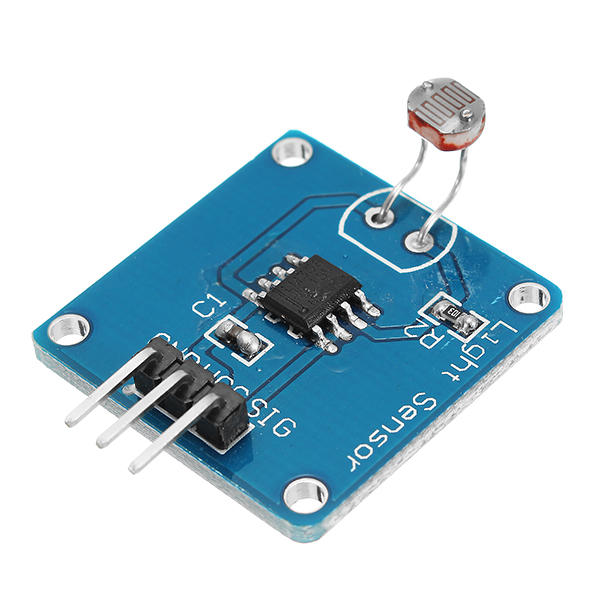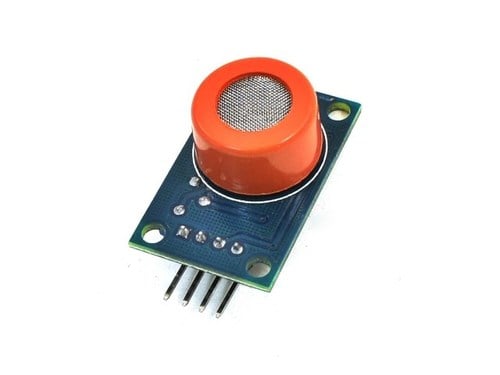What is Subconscious Mind ?
The unconscious mind (or the unconscious) consists of the processes in the mind which occur automatically and are not available to introspection and include thought processes, memories, interests and motivations.
Mysterious Facts about Subconscious Mind :-
“Whatever we plant in our subconscious mind and nourish with repetition and emotion will one day become a reality.” -Earl Nightingale.
The mind is a many splendored thing. Religions, philosophers, great thinkers, researchers, scientists, psychologists, even esteemed psychonauts, so many have tried their hand at attempting to unravel the complex mysteries of the subconscious and conscious. And while we know plenty, it’s still a great, wondrous mystery that is at the basis of determining each human’s life. Our subconscious mind makes decisions before our conscious mind even knows what’s going on. That’s how invasive it can be, and how critically important it is that we have a better understanding of how our bigger and better half works. Read on to know your own mind better with 30 beneath the surface facts about the subconscious mind.
1) First Things First :-
As per biologists, the brain has 90 billion nerve cells held together by trillions of connection points called synapses. But how powerful is the human brain, really? Scientists suggest a human brain can hold as much information as the Internet did circa 2007. Kind of shocking, considering how often we misplace everyday items, or forget what we ate for dinner last night. This just goes to show how much is at work that we don’t consciously know about.2) A Broom Closet in a Mansion :-
Try putting this into perspective—we only use 5% of the brain’s capacity for memory, which means the subconscious mind controls the remaining 95%. Even though we don’t know it, our subconscious mind is actively at work whether our conscious mind knows it or not !
3) Kind of like Autopilot :-
Don’t really understand how the subconscious works? Try this – next time you’re typing, try to consciously acknowledge each key you’re typing. It’s tiresome and time-consuming, isn’t it? Notice how when you don’t pay attention, the keys still get typed anyways? That’s the power of the subconscious at work!
4) One Big Bank :-
Your subconscious mind is a ginormous memory bank that has been storing and sorting EVERYTHING that has ever happened to you. By the time a human reaches the age of 21, the amount of data received and stored is 100x the contents of the Encyclopedia Britannica—that’s 32 volumes—32,640 pages of 40 million on half a million topics!
5) So much Bigger :-
The best way to visualize how the conscious and subconscious works is like an iceberg—the conscious being the small part of the iceberg that appears above the water, and the subconscious being the huge part that rests below the water. Conversely, it’s your conscious mind that is the gardener that plants the seeds into the garden or fertile soil that is the subconscious mind. This why the power of positive thinking is so important!
6) Repetition is Key :-
The conscious mind commands, and the subconscious mind obeys. This is where the Law of Attraction comes in – if you keep repeating that positive mantra, the conscious mind may not necessarily believe it—yet—but the subconscious mind will “hear” it and work on getting there.
7) The Power of Positive Affirmation :-
The subconscious knows no time. There is no past or future, simply NOW. Using affirmations with the word now or in present time will help align your subconscious and work for you in the moment. Start thinking about what you want as though you already have it.
8) About Psychedelics :-
Researchers have revealed that the use of LSD (lysergic acid diethylamide) significantly improves language ability by allowing our brains to open up and use them more like a thesaurus. While under the influence of LSD, users are able to easily access related words, proving that the drug enhances the brain’s semantic networks. While engaged in a picture-name task, participants were more likely to make the connection between connected meanings like “hand” instead of “foot”.
9) Some Trippy Stuff :-
Other findings show that LSD brings out a subconscious web of ideas that aren’t conscious, they are closer to awareness, bridging the gap between the two. The drug is able to alter consciousness and makes the brain connect in ways it normally doesn’t.
10) Data Attack :-
According to the Neuro-Linguistic Programming (NLP) model, every single second, humans are bombarded with over 2 million bits of data. It’s the subconscious mind’s duty to help filter through that, otherwise, the conscious mind would be extremely overwhelmed, unable to do its job.
11) Magic Number Seven :-
The subconscious mind goes through this constant barrage of information that is continually being downloaded and sorts through what is necessary at the time, processing 7 chunks of information. This is called “chunking” different groupings of information, rather than one long string of information.
12) A Different Language :-
The results of what the subconscious picks up—the “chunking”—is then communicated to the conscious through images, feelings, sensations, dream and reflexes. The language in which the subconscious communicates is not verbal. There are no words, merely representations.
13) A Picture is Worth a Thousand Words :-
Everything that the subconscious picks up on is through messaging. It speaks in images, feelings and metaphors. It responds to visualizing what you want, but will also communicate back with images and metaphors in the form of dreams, hunches, and songs that “seem” to pop out of nowhere.
14) What You See is What You Get :-
The subconscious mind takes everything literally. This explains why horror movies make us jump in our seats. Or why you’re surprised that the seemingly real picture is—gasp—just Photoshopped.
15) Get 'Em While They 're Young :-
Most of our thoughts and beliefs about the world are formed on a subconscious level, from the ages of 2 to 7 when learning is subconscious. It is at this time that a child’s perceptions of the world are downloaded and formed.
16) Doors of Perception :-
Jim Morrison of The Doors was fascinated with the concept of using art to get in touch with the subconscious mind. He believed in “…a long, prolonged derangement of the senses to attain the unknown… Although I live in the subconscious, our pale reason hides the infinite from us.” Sure dude, whatever you say.
17) Sweet Spot :-
15 minutes before falling asleep, where the mind and body begin to calm down, muscles loosen up and breathing is more relaxed, this is where the brain produces alpha waves. In this 15- minute window between wakefulness and sleep, there are 7-14 electrical waves each second. This is the subconscious mind’s tunnel open to receive messages.
18) Automatic Living :-
Breath is under subconscious control—we forget about it, as it comes naturally to us. Ancient Eastern medicine recognizes the importance of breath work and how breath is the link between the conscious and subconscious mind. When we begin to bring it into the conscious mind, we can become more deeply aware of other parts of ourselves that have been subconscious—this creates mindfulness and is the founding principle of meditation.
19) Shower Thoughts :-
The subconscious mind likes to be left alone, working best when you’re not alert, like when you’re sleeping. Ever notice how good ideas or solutions to problems you’ve been thinking about come to you while watching TV, taking a bath, riding a bus, or going for a walk?
20) Your Life is Determined by Your Unconscious Mind :-
New breakthroughs in the study of epigenetics show that our genes are not necessarily in charge of dictating our inherent traits. It isn’t solely our genes that determine who we are. There are new findings that prove our genes are in fact controlled and manipulated by how our minds perceive and interpret our surrounding environment! This means we have more control over how we can alter many factors about the way we are by the way we interpret events and situations that happen to us.
21) The Power is Yours :-
Dr. Bruce Lipton, former professor of medicine at Stanford University, explains that filtering through things in a more positive way will help to provide a more positive, healthier and better quality of life—regardless of genetic makeup. Attitude, positive or negative, sends messages on a cellular level.
22) Faster Than a Train of Thoughts :-
Our subconscious mind is way ahead of our conscious mind. Studies from the 1970s show that the human brain begins to prepare for action over a third of a second before we consciously decide to act. The bottom line? We think we are making a conscious decision, when in reality, our subconscious mind has already decided for us.
23) Never Let's Go :-
The subconscious mind is always awake and whirring. It’s always working to control your organs and bodily functions while your conscious mind goes to sleep. That being said, your subconscious still picks up on everything, still hearing and processing while in a sleeping state. Listening to relaxing music while sleeping or just before sleeping, being aware of what messaging you expose to yourself before sleeping or just after you awake, is all food for your subconscious mind.
24) The Truth about Ouija :-
A Ouija board is not haunted by ghosts, it’s actually powered by your subconscious. It thrives on what is known as the “ideomotor effect” (ideo from idea or mental representation and motor from muscular action), an example of unconscious, involuntary physical movement that is moving when you’re trying to remain still. That abrupt kickback feeling that awakens you from a deep sleep—AKA the hypnic jerk—is a more aggressive example of the ideomotor effect.
25) What's Really Happening :-
The whole cause and effect of a Ouija board relies on your subconscious. With the setting and the question for the board in place, your brain may create images and memories, causing your body to “override” what the brain consciously tells it to do. Therefore, the muscles in the hands and body will move the pointer to the answer you may subconsciously want to receive.
26) Group Effort :-
And with many people’s hands on the pointer? There’s more possibility of movement. There have been multiple scientific studies showing that blindfolded participants spell way more incoherent messages. Nonsensical words are produced when users cannot spell out from the letters they can see.
27) Getting Your Head in the Game :-
The power of visualization is so strong—especially for athletes—because it programs the subconscious brain. Richard Suinn, an esteemed sports psychologist, first started working with Olympic athletes in 1972 using visualization as part of their training. He studies downhill skiers and found that when he asked them to imagine skiing, electrical signals from the brain were comparable to the signals found when actually physically skiing.
28) The Mind's Eye :-
Another study regarding athletes programming their subconscious was conducted by Guang Yue, an exercise physiologist. He asked volunteers to imagine flexing their biceps. This “visual weight training” happened every day for a few weeks, and afterward, the volunteers showed a 13.5% increase in physical bicep strength. Similar results came from a study at the University of Chicago where participants visualized shooting free throws for a month and improved their shooting by 23%; and a French study showed that long jumpers who spent time visualizing their jumps actually improved the actual motion of the jump 45% of the time.
29) Where the Magic Happens :-
Salvador Dali was fascinated with this special window between being awake and sleeping. In fact, it was at that moment in time that he was able to access and create some of his most famous paintings. His favorite way to make the most of this transitory state was to place a tin plate on the floor and hold a spoon over the plate, while seated in a chair. He would relax his body, entering that dream state and the moment he would fall asleep, the spoon would fall out of his hand and hit the plate, waking him up so that he could record what his subconscious drew up.
30) Feel the Love :-
In the “Love Study” experiment, researchers sought to show the effects one’s thoughts can have on another person. Couples were separated in different rooms, separated by walls of steel. The objective was to see if the participants could transmit thoughts to each other. Both participants were hooked up to to an Electroencephalogram (EEG) and the results showed that people with close relationships or experienced meditators, when directly and intensely sending an intention to each other, could synchronize their brainwaves—no matter the distance. It has been scientifically proven that meditation established more coherent brain waves and biophoton emissions. Other factors that could have helped this work is the belief that the experiment works, the love and compassion for the other, and the intense focus. This just goes to show that people you are close to, can subconsciously receive thoughts.















